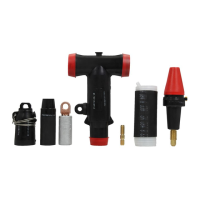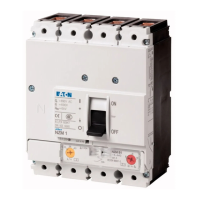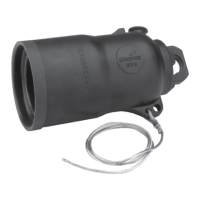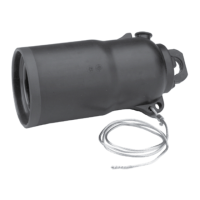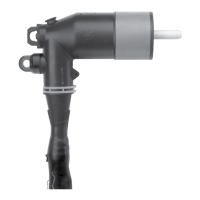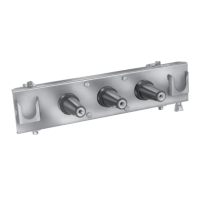Field calibration check
To check the calibration of the control, compare the voltage
that the control reports on the display to the voltage
measured at the test terminals.
Note: Field calibration checks are only an indication of
calibration and are not as precise as the procedure
described in the Troubleshooting section of this
manual.
1. Connect an accurate true-RMS responding voltmeter to
the voltmeter terminals.
2. Use the keypad to access FC 47 parameter. Key in:
FUNCTION, 47, ENTER.
Or access via the menu: Features > Calibration >
Voltage Calibration.
3. Under ideal conditions, the displayed voltage of
the control will match the voltage of the voltmeter.
Realistically, the voltages may be slightly different
because:
A. The metering and operation is based upon the RMS
value of the fundamental power line frequency.
Thus, the metered values exclude the influences of
harmonic voltages which are probably present on the
line. A true RMS meter, however, will include these
harmonic voltages in its calculations of the RMS
voltage. This does not present a problem with either
metering device, since each device uses a different
approach to metering.
B. The calibration of the voltmeter being used for
measurement is probably not exact. Even a very
good meter with a basic accuracy of 0.5% could
be in error by as much as 0.6 V (out of 120 V) and
still be considered to be “in calibration.” The control
is calibrated using a conditioned power supply and
reference voltmeters which are periodically calibration-
checked, traceable to the National Bureau of
Standards.
Note: The control firmware is designed to perform ratio
correction. Through the use of the ratio-correcting
transformer (RCT) located on the back panel, the
voltage brought to the control is usually corrected
to the 120 V base voltage. However, there are some
ratings in which this voltage is not fully corrected
by the RCT. Refer to the regulator nameplate for
specific information for that regulator. Table 3-3
gives a general indication of these voltages.
When mounting the CL-6 control into an existing
enclosure, the existing enclosure may not have
RCTs installed. In this case the voltage measured
on the voltmeter terminals may not match the
voltage read on the control.
Whatever voltage results from dividing the nominal
system voltage, FC 43, by the overall PT ratio,
FC44, is considered by the control to be the
nominal voltage. Therefore, when that voltage
appears at the input of the control, 120 V will be
reported as the output voltage, FC 6, whether
the nominal is actually 120 V or not. Likewise, the
compensated voltage, FC 8, and input voltage,
FC 7, will be scaled accordingly. If the regulator is
equipped and programmed for reverse power opera-
tion, the compensated voltage will be correct even
during reverse power conditions.
The load voltage, FC 10; source voltage, FC 11;
and calculated parameters such as the kVA, kW,
and kvar, are not scaled similarly to FC 6 and FC 8.
Instead, they reflect the true value of line voltage.
Note: The voltage measured at the test terminals during
reverse power flow is the new source voltage at the
load bushing of the regulator.
Removal from service
Refer to the appropriate regulator manual as indicated on
the regulator nameplate for further information.
Determining neutral position
Return the regulator to neutral. Only a regulator in the
neutral position can be safely removed from service without
interrupting load continuity. It is recommended to use more
than one method to determine the neutral condition.
DANGER
Explosion Hazard. During bypass switching, the
regulator must be in the neutral position. Prior to
bypass switching: 1) The regulator must be placed in
the neutral position; 2) Tap-changer operation must be
disabled. If the regulator is not in the neutral position,
part of the series winding will be shorted when the
bypass switch is closed, resulting in high circulating
current. Failure to comply will result in death or severe
personal injury and equipment damage.
WARNING
Explosion Hazard. Bypass a regulator with the line
energized only if the position indicator, the neutral
light, and the control tap position indicate neutral and
the voltage measured between the source and load
bushings using an approved voltmeter is zero. If both
neutral indicators do not indicate neutral or there is a
voltage between the source and load bushings, the line
should be de-energized to avoid shorting part of the
series winding and resultant high circulating current.
Failure to comply can result in death or personal injury
and equipment damage.
15
CL-6 SERIES CONTROL INSTALLATION, OPERATION, AND MAINTENANCE INSTRUCTIONS MN225016EN January 2016

